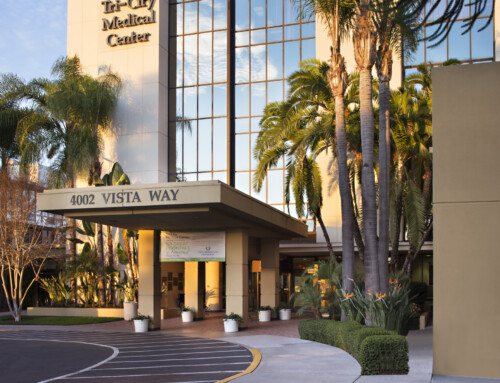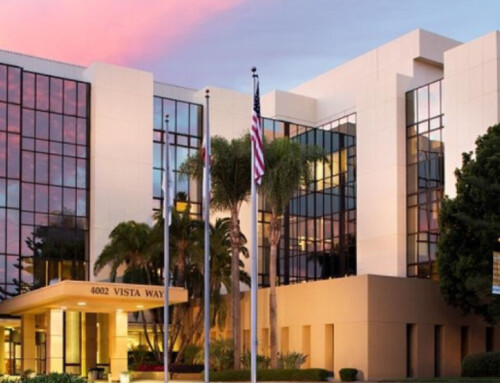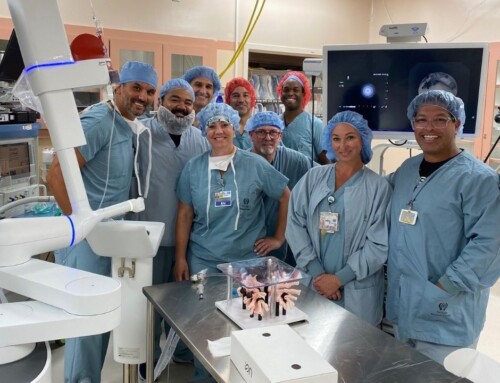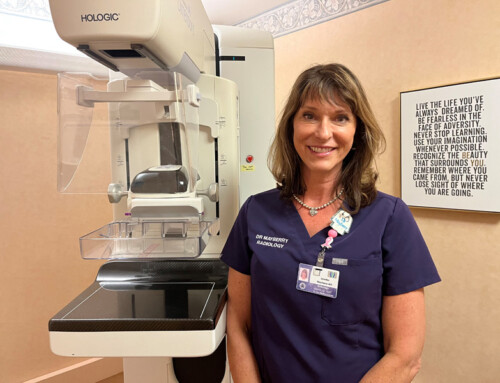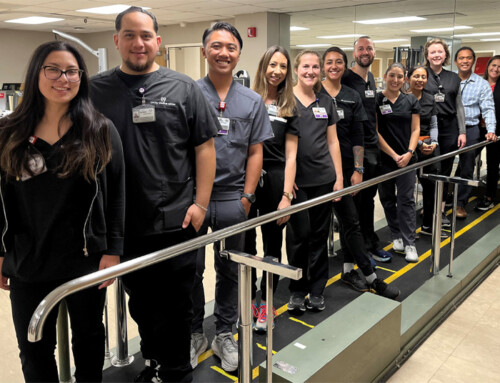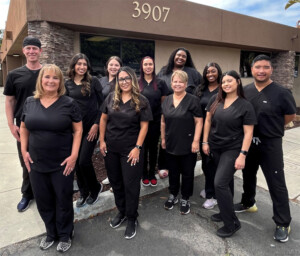
Kidney Stones: Prevention and Treatment
“Although we offer a range of treatment options for kidney stones at Tri-City Medical Center, our goal, first and foremost, is to help prevent the formation of stones so patients don’t have to endure this painful experience,” said Jason Phillips, MD, MBA, FACS, co-founder of Urology San Diego and Chief of the Division of Urology at TCMC.
Kidney stones are hard, pebble-like pieces that occur in one or both kidneys when urine has high amounts of minerals, salts and uric acid that form crystal deposits that the body can’t dilute. According to the National Institute of Diabetes and Digestive and Kidney Diseases (NIDDK), there are four main types of kidney stones. The most common are calcium oxalate or calcium phosphate stones, which can develop when extra calcium remains in the kidney instead of being flushed out with urine. It’s important to note that calcium from food does not increase the likelihood of calcium oxalate stones. Uric acid stones can form when urine contains too much acid and struvite stones can occur because of chronic urinary tract infections. Cystine stones result from a rare hereditary disease called cystinuria.
Additionally, men are more likely to develop kidney stones than women, as are people with a family history and who’ve had them once already. Eating a diet high in protein, salt and sugar and being overweight, as well as certain diseases (diabetes, IBD), medications and gastric bypass surgery may increase the risk of developing kidney stones.
“In San Diego, dehydration is the most common reason we see stones in our practice,” said Dr. Phillips. “People forget to drink enough liquids when they are participating in outdoor activities because our weather is so nice year-round.”
“Lifestyle and dietary changes can help reduce the risk of different types of kidney stones,” added Dr. Phillips. “I encourage people to drink three liters of water or fluids a day, eat plenty of fruits and vegetables, and limit their salt intake and consumption of meat. Adding lemons and limes to their diet is important as they are a good source of citrate, which is a potent stone inhibitor. I also recommend that they work with a dietician to create a low oxalate, but calcium rich diet. Oxalate is a natural substance made daily in the liver or absorbed from foods such as nuts and chocolate.”
Those who get kidney stones may experience symptoms such as a severe pain in the lower back, bloody urine, a constant need to urinate, pain while urinating, inability to urinate, and cloudy or foul-smelling urine. These symptoms may come in waves and last a long or short time. More than 500,000 people will end up in the emergency room each year because of kidney stone issues.
“It’s important that people who are experiencing these symptoms see their primary care physician immediately,” said Dr. Phillips. “A referral to a urologist is critical as the stones could get bigger, cause infection, or become lodged in the urinary track and lead to long-term kidney damage.”
“Once we have diagnosed stones via blood, urine and imaging tests, and have determined the size, location and composition of the stones, we can begin the appropriate treatment,” added Dr. Phillips. “For small stones less than five millimeters, we will start with medical expulsion therapy using fluids and Flomax, a medication to help relax the muscles in the ureter, the tube between the kidney and bladder, to see if the stones will pass on their own.”
Extracorporeal shock wave lithotripsy (ESWL) is about a 60-minute treatment that uses repeated, targeted ultrasound waves to break up stones in the kidney so they can pass from the body in urine; although it is a non-invasive outpatient procedure, anesthesia is often required to manage the pain.
“If these approaches are unsuccessful, then surgery may be necessary,” said Dr. Phillips. “The most common procedure for removing stones in the kidney and ureter is ureteroscopy (URS) with holmium or thulium laser lithotripsy. During this procedure, I insert a ureteroscope with a camera, into a person’s bladder and up through their ureter to the kidney so that I can see the stones. A tiny, wire basket-like device is used to capture and remove small stones. The laser is used to pulverize large stones about the size of a pea, so that they too can be removed or pass.”
“For larger, marble-sized stones, Tri-City offers two minimally invasive procedures called percutaneous nephrolithotomy and percutaneous nephrolithotripsy,” added Dr. Phillips. “Both myself and my business partner at Urology San Diego, Aaron Boonjindasup, MD, MPH, perform these difficult PCNL procedures using the da Vinci robotic surgical system and we have excellent stone-free rates.”
A half-inch incision is made in the patient’s back through which a nephroscope (miniature fiberoptic camera) is inserted into the kidney so that the surgeon can see the stones. A ‘cyber wand’ is also passed through the incision so that the surgeon can then crush the stones so that they can be suctioned out. Post-surgery, a thin tube (ureteral stent) may be left in the kidney to drain the urine and stones into a bag outside of the body. When stones are removed through the tube, it is called nephrolithotomy, whereas, when they are broken up and then removed, it is called nephrolithotripsy.
“Only as a last resort, will we do a robotic nephrectomy – removal of the kidney – if the kidney has become completely non-functional because of multiple stones,” said Dr. Phillips.
“No one wants to suffer through the pain of kidney stones, which is why maintaining good kidney health is critical,” said Dr. Phillips. “Too often, the first time we see patients with kidney stones is in the ER. Our hope is that through increased awareness of the signs and symptoms of kidney stones, patients will see a urologist sooner who can help them manage the condition and improve their quality of life.”
To learn more about the primary care services offered at Tri-City Medical Center, call 855-222-8262 to be referred to a Tri-City Primary Care physician
Click here to learn more about the urological services offered at Tri-City Medical Center or call 855-222-8262 to be referred to a urologist.
